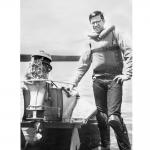But the FB was already loop-scavenged. Like the earlier deflector engines, it had separate cast iron cylinders (whereas the FC and FB had aluminum monoblock cylinders), but it had modern pistons and heads. Konig sold them with sort of weird looking megaphones that swooped out and aft, one on each side. Toward the end of the production run, he was selling the FB with a quiet, can-type exhaust.
(EDIT) There's a typo up there; I meant to say the FC and FD had monoblock cylinders.


 Thanks:
Thanks:  Likes:
Likes: 



 Reply With Quote
Reply With Quote

Bookmarks